#China History
Text
[Hanfu · 漢服]China's national Important Cultural Relics Impression Series By Artist @陆曼陀
China Neolithic Period:The Hongshan culture(4700-2900 BC)Relics<玉猪龙/Pig dragon>
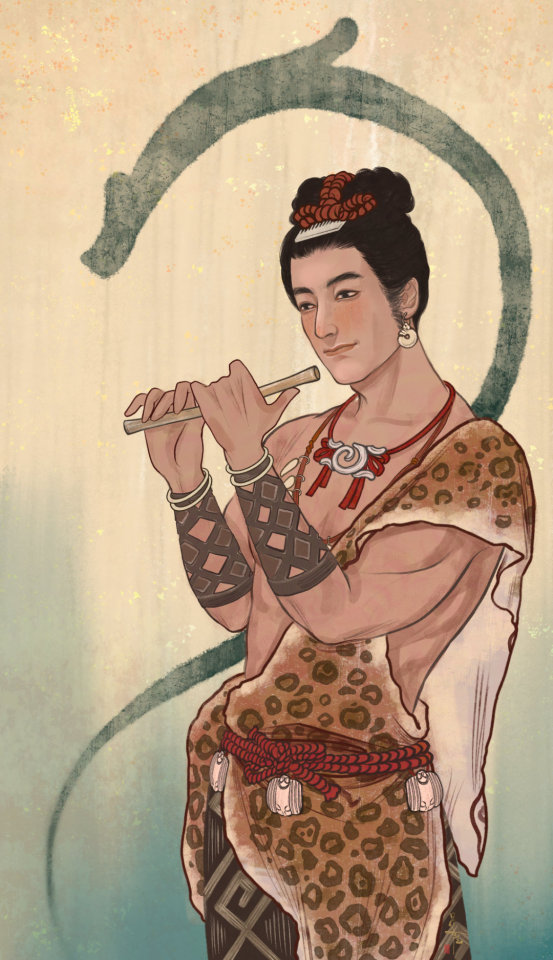

China Shang dynasty / Western Zhou dynasty(1200–800 BC) · Shu state Relics < 太阳神鸟金饰/Golden Sun Bird>

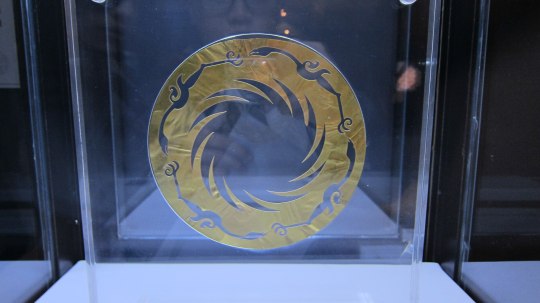
China Western Han Dynasty (202 BC – 9 AD)Artifact Relics<长信宫灯/oil lamp in the shape of a kneeling female servant>


After the lamp is lit, the soot enters the base of the palace lantern through the sleeve to achieve the purpose of cleaning the air.

China Eastern Han Dynasty(25–220 AD)Artifact Relics<铜奔马 or the Galloping Horse Treading on a Flying Swallow (馬踏飛燕)>


China Eastern Han Dynasty(25–220 AD) Artifact Relics<摇钱树/Money tree (myth)>

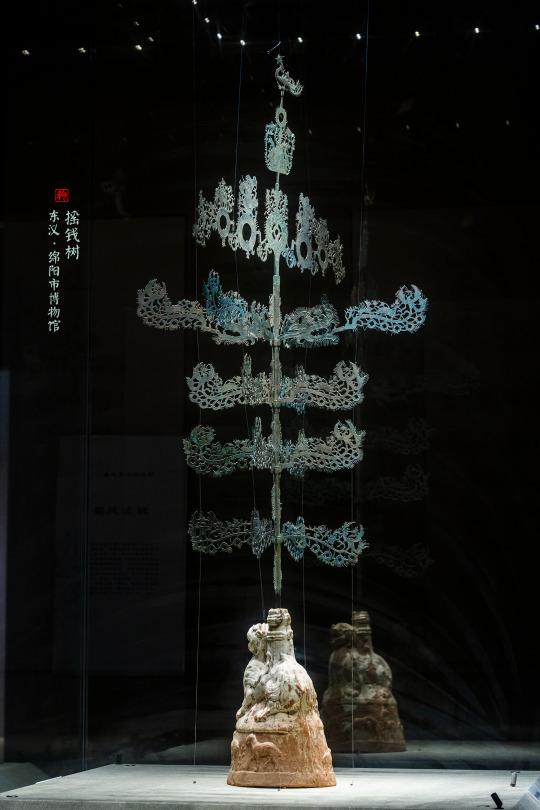
China Tang Dynasty(618–907CE) Artifact Relics<女立俑/Female standing figurine >
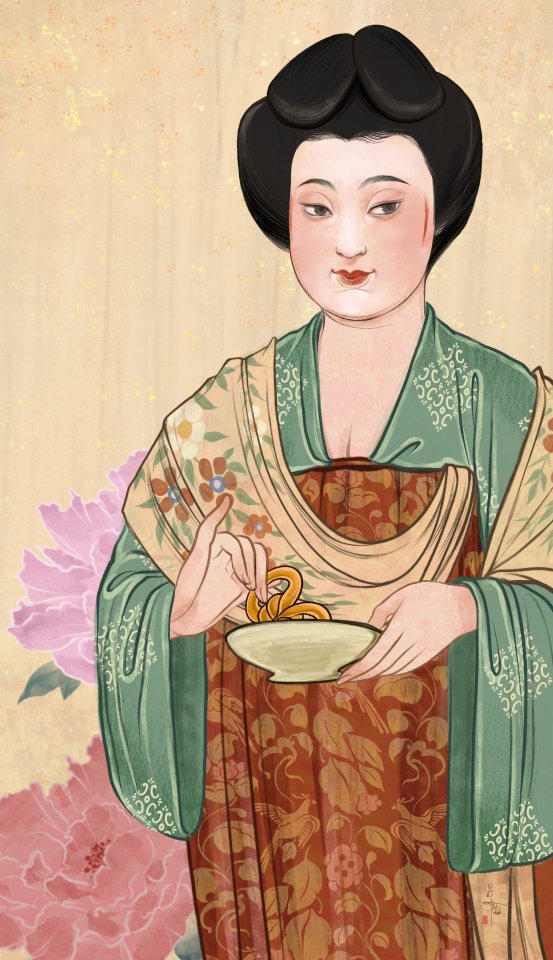
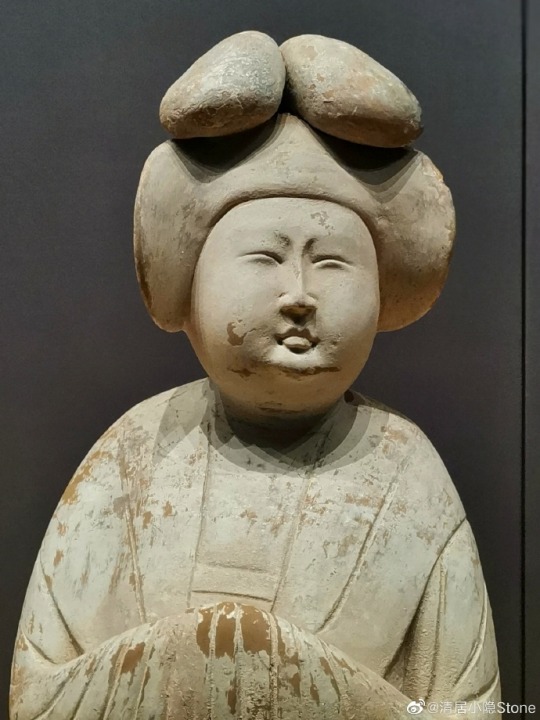
China Song Dynasty (960–1279) Artifact Relics<汝窑天蓝釉刻花鹅颈瓶/Ru kiln sky blue glaze carved gooseneck bottle>
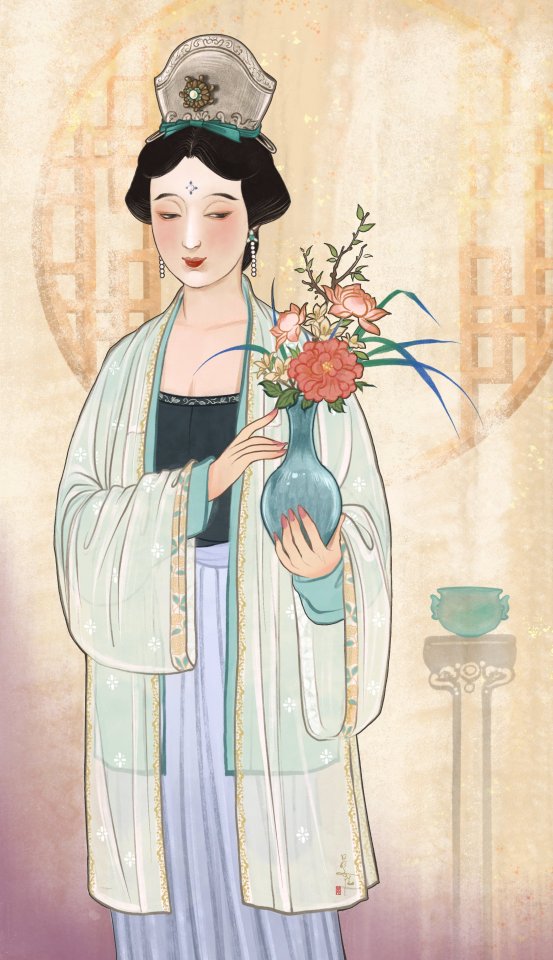

China Song Dynasty (960–1279) Painting<千里江山图/A Thousand Li of Rivers and Mountains>by 王希孟(Wang Ximeng)



China Yuan dynasty (1279–1368) Artifact Relics<霁蓝釉白龙纹梅瓶/Ji blue-glazed plum vase with white dragon pattern>

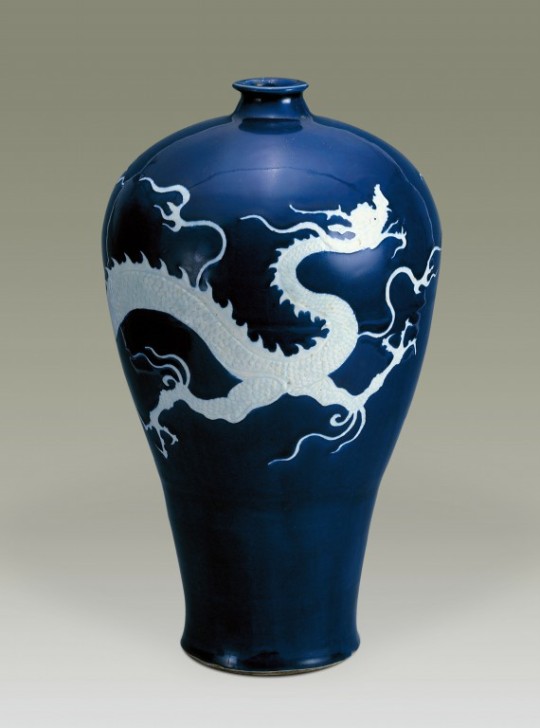
【Artist:陆曼陀 Social Media】
————————
Twitter:https://twitter.com/LuDanling
Weibo:https://weibo.com/u/2846691957
Post Source:https://weibo.com/2846691957/NzQ9IyzKL
————————
#chinese hanfu#陆曼陀#China history#chinese art#hanfu illustration#hanfu accessories#hanfu#hanfu history#china#chinese#history#chinese aesthetics#culture relic#汉服#漢服#heritage#civilization
427 notes
·
View notes
Text
Who is Yang Guang?
楊光是誰?

The only picture I can find of him is this one (pictured above), when you search his name he doesn't have a page on Baidu or Wikipedia, although he is mentioned in this article. On Baidu and Wikipedia there are pages of people named 杨光 but none of them seem to be him.
He seems to have been a singer in the 1950s judging by the way I found him was through his duet with Tsin Ting (靜婷) in the song 搖船曲 (Rocking Boat Song) (Youtube).
Other than this, from my google searching I can't find much of anything about him. He is most likely Taiwanese or Chinese, unknown age or if he is still alive, or if he has any solo music. I also don't know if he goes by an English name.
#lost media#chinese culture#taiwanese culture#taiwanese history#taiwan history#china history#chinese history#decade: 1950s#1950s history#1950s#vintage men#vintage celebrities#lost media search
12 notes
·
View notes
Text
The curse of long-ruling autocrats
By Yuhua Wang
In October 2022, during the 20th Party Congress of the Chinese Communist Party, Xi Jinping was “reelected” as the party’s chairman, paving his way for a third term as China’s top political leader. This will make Xi the longest-reigning head of state in the history of the People’s Republic—even longer than Mao Zedong, the founder of the regime, who was head of state from 1949 to 1959.
Are long-reining rulers a blessing or a curse to the country?
2 notes
·
View notes
Text

The first Emperor of China was Qin Shi Huang (259 BC – 210 BC). He is accredited as the founder of the Qin dynasty. Under his rule, China expanded vastly in terms of geographical size.
He is widely regarded as a tyrannical leader and directed the execution of tens of thousands of people.
There were three attempts to assassinate him throughout his reign. The first attempt was via a dagger that was smuggled inside an exotic map, which was intended to be a gift. The second was with a block of lead, which was hidden inside a lute, belonging to a musician who had been invited to play in the palace. The assassin/musician swung at the king with it, but missed. The third involved a hired strongman, who was to hurl a heavy metal cone, of 160 lb, at the Huang’s carriage as it passed in the mountains. The cone did hit the carriage; but Huang was inside the carriage behind it, having used two other carriages as dummies.
As Huang got older and his health worsened, he became obsessed with funding the ‘elixir of life’. He studied mystical texts about the legend of the elixir, and then sent teams on expeditions to islands and mountains where it was rumoured could be found. Huang also sought to find a magician who was supposedly 1000 years old, and hired a group of men to locate him. The group never returned, perhaps because they knew what would happen if they returned to Huang having failed.
The emperor owned over 200 palaces. Under these, he had built for him a network of tunnels, which he believed could keep him safe from evil spirits.
Despite his fear of dying, Huang ordered the building of a huge mausoleum for himself. The tomb was built at the bottom of Mount Li, and was surrounded by around 6000 terracotta soldier statues. Huang believed the statues, equipped with real bronze weapons, would protect his body in the afterlife.
Although the amount of real men it took to build this gigantic mausoleum can’t be figured exactly, it was certainly in the tens of thousands. After the tomb was completed, it was sealed off, with many things hidden inside. Huang had ordered for all the men who helped build it then be executed, because he wanted to preserve the secrecy of his building.
^ Yep. We still get tyrants today. We know who they are. Regularly we see their photos in the news, and hear about their madness. But, wow: this ^ man must have had some real problems. You wonder what could happen to a man for him to get so deluded as to his own self worth. These are reasons why I often find history so disturbing. Violent, murderous. Mad kings … that kind of thing. There is certainly truth in that old phrase ‘gone mad with power’. In history books, the term ‘Great’ is often labelled to a particular leader, or man. ‘The Great King of …’ etc, etc. I see nothing of greatness in men such as these.
History can be a fairly grizzly topic indeed.
0 notes
Text
youtube
#tangdynasty #poet #MengHaoran paid a visit to an old friend's house that was surrounded by serene rural scenery. As they chatted about everyday life, Meng also shared an intriguing story involving the emperor. Dive into this the AI-animated "Poems of Timeless Acclaim" to unravel the captivating story! Check out the video and subscribe to the channel for more China’s stories!
0 notes
Text



Turqouise inlaid bronze dagger axe (ge), China, Late Shang Dynasty 12th-11th century BC
from Sothebys
4K notes
·
View notes
Text

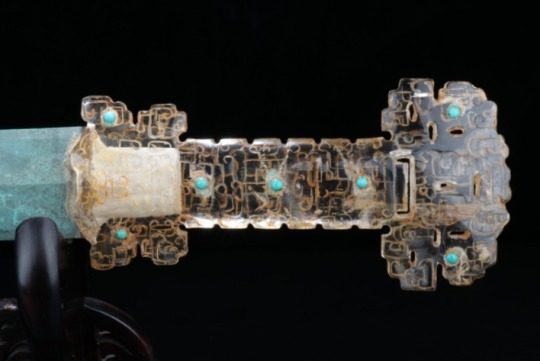
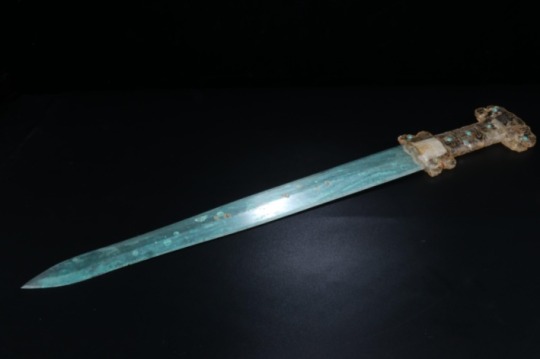
Chinese Bronze Sword With An Inlaid Rock Crystal, Turquoise and Gold Hilt
Warring States Period, Circa 4th - 2nd Century B.C.
#Chinese Bronze Sword With An Inlaid Rock Crystal Turquoise and Gold Hilt#Warring States Period#Circa 4th - 2nd Century B.C.#bronze#bronze sword#ancient artifacts#archeology#archeolgst#history#history news#ancient history#ancient culture#ancient civilizations#ancient china#chinese history#chinese art#art
2K notes
·
View notes
Text


🌞 Sun and Moon Pagodas | 日月双塔 🌚
Originally built in Guilin, Guangxi during the Tang dynasty (618-917) the pagodas were reconstructed in 2001.
#chinese culture#chinese history#Chinese architecture#buddhism#pagodas#tang dynasty#asian architecture#China#east asia#east Asian cultures#dynastic china
1K notes
·
View notes
Text

Tianjing Pavilion, Lake Shi. Suzhou, China,
Photo by Jeff Deng
#art#design#architecture#history#luxury lifestyle#style#pavillion#ming dynasty#china#lake shi#suzhou#tianjing pavilion#jeff deng#1612
2K notes
·
View notes
Text
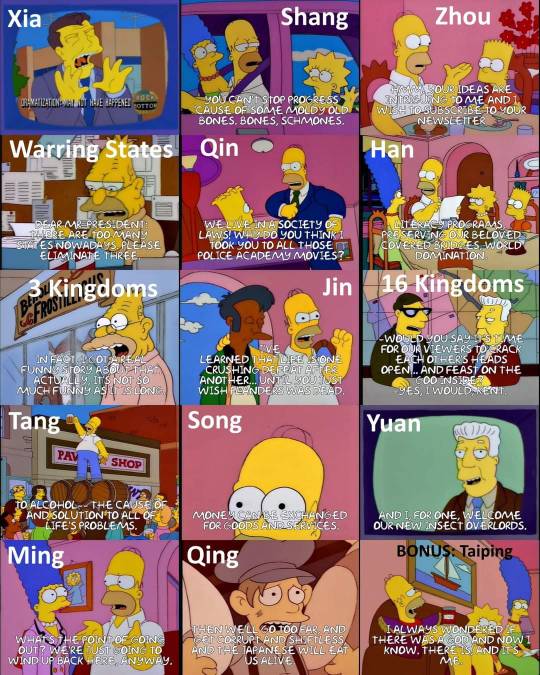
Chinese imperial dynasties as Simpsons quotes
2K notes
·
View notes
Text
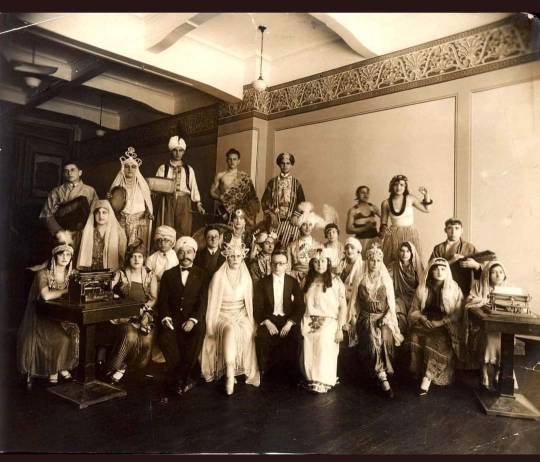
Baghdadi Jews celebrate Purim in Shanghai 1908
Source: Rachel Wahba
#jumblr#jewish#jews#nesyapost#jewish history#jewish culture#purim#Jewish holidays#purim upon us lads#shanghai#China#Jews in China#1908#baghdadi jews
925 notes
·
View notes
Text
[Hanfu · 漢服]Chinese Tang Dynasty(618–907AD)Traditional Clothing Hanfu Based On Dunhuang Mural
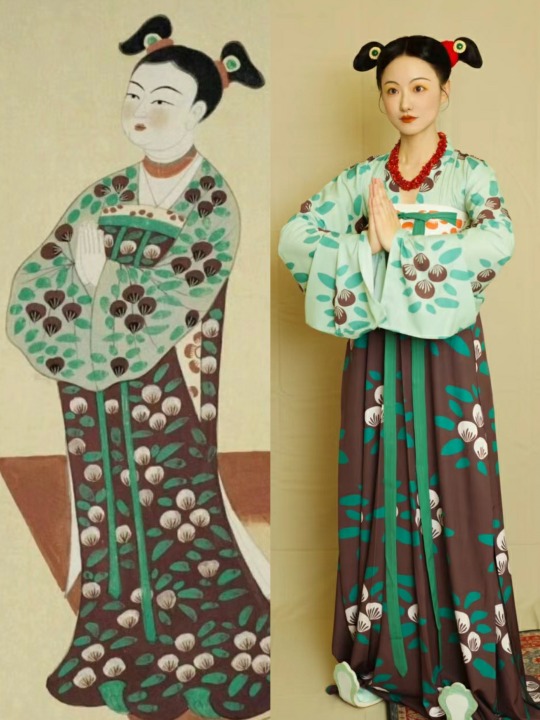

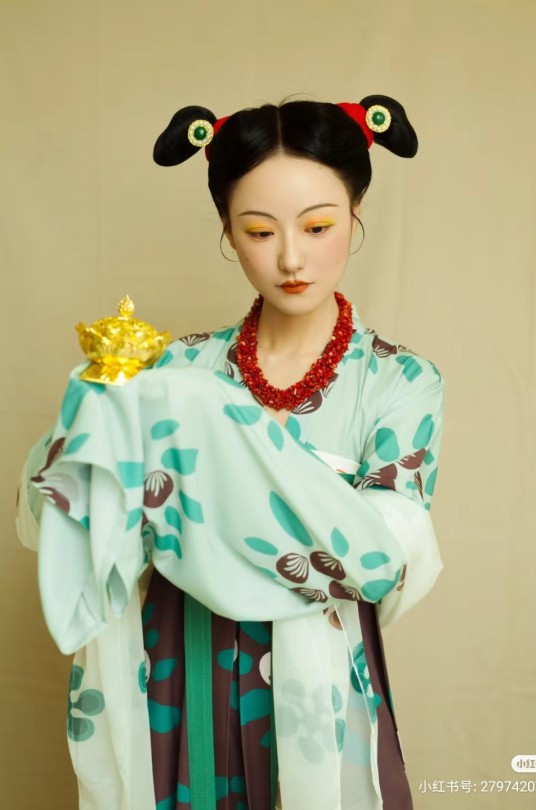
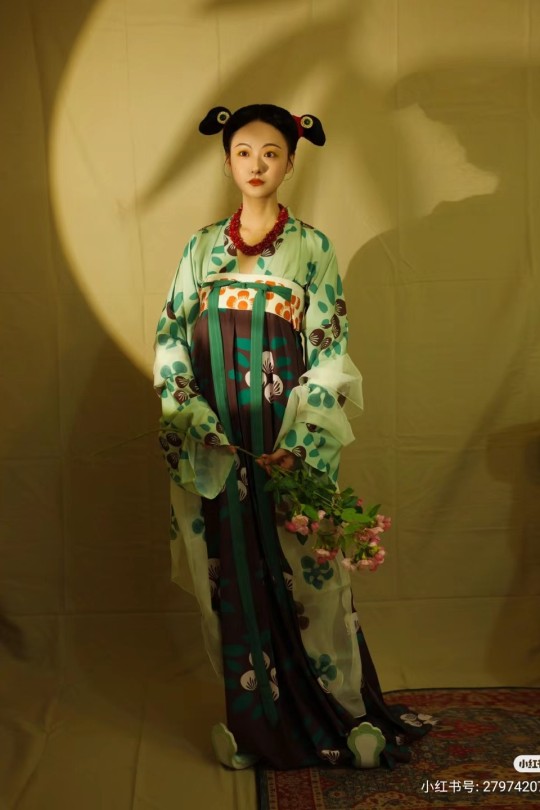

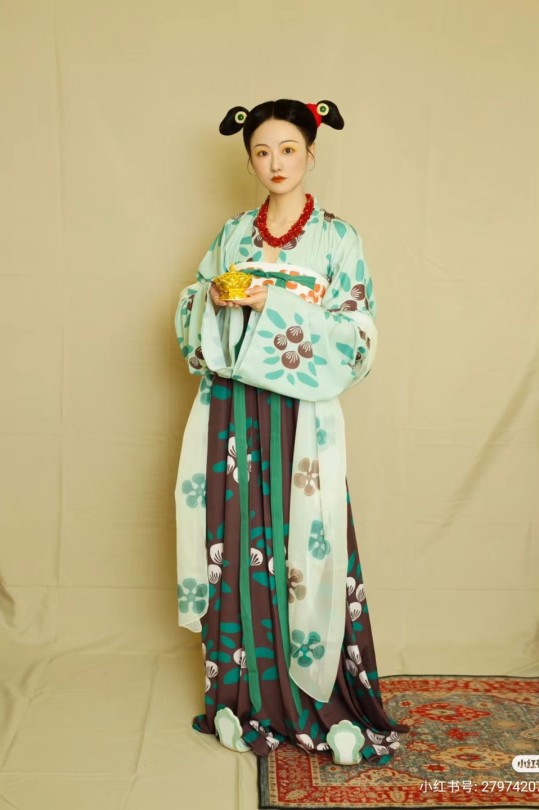

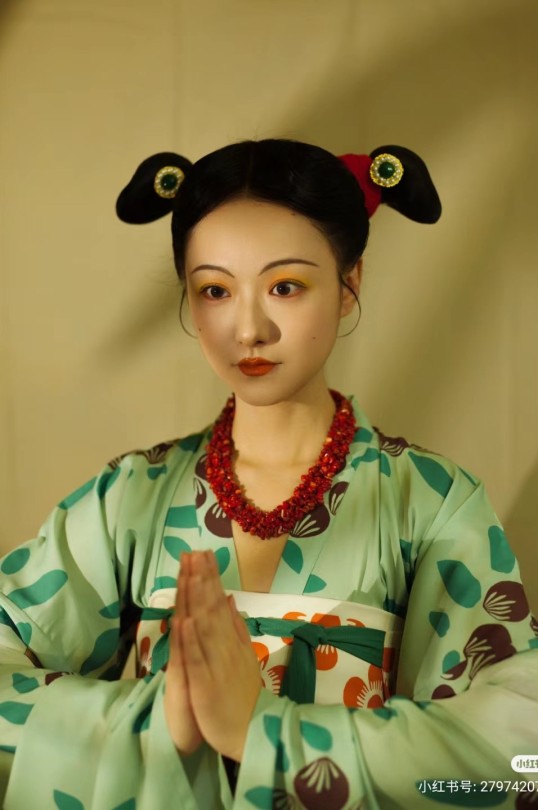


【Historical Artifacts Reference 】:
▶Woman Donor at Murals in Cave 114 of Mogao Grottoes in Dunhuang China

————————
📸Photo:@摄影师梁咩咩
👗Hanfu: 青泠谷
🧚🏻Model&💄Stylist:@张小花
Post-production: @张小花
🔗Weibo:http://xhslink.com/XzpEhG
————————
#chinese hanfu#Tang Dynasty(618–907AD)#hanfu#hanfu accessories#hanfu_challenge#chinese traditional clothing#china#chinese#hanfu history#漢服#汉服#中華風#china history#historical fashion#history
206 notes
·
View notes
Photo
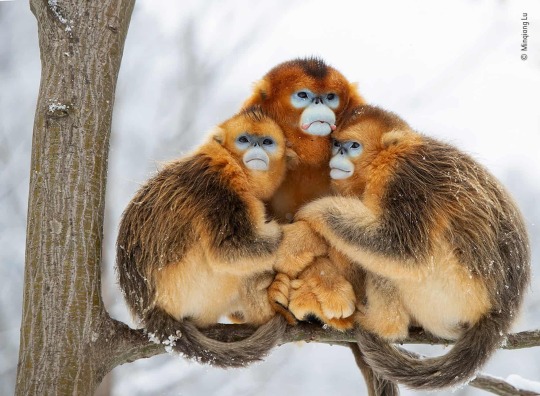
Two females and a male golden snub-nosed monkey huddle together to keep warm in the extreme winter cold. Threatened mainly by forest loss and fragmentation, this endangered species is confined to central China. One of the shortlisted 25 images in the running for the Wildlife Photographer of the Year People’s Choice award at the Natural History Museum
Photograph: Minqiang Lu/2022 Wildlife Photographer of the Year
#minqiang lu#photographer#wildlife photographer of the year#golden snub-nosed monkey#monkey#animal#mammal#wildlife#china#natural history museum#nature
1K notes
·
View notes
Text
0 notes
Note
Hi my friend wanted to ask about Chinese Opera and the red pom poms on their hats and their significance. I asked my mom and she said they were for decoration so I just wanted clarification
Hi! Thanks for the question, and sorry for taking ages to reply!
The pom poms you see on 盔头/kuitou (Chinese opera headdresses) are called 绒球/rongqiu (lit. "velvet ball"). They are often red, but can also be other colors, and vary in size. Ronqiu are decorative and serve to distinguish the many different types of kuitou from one another. Each type of kuitou is distinct in the number, size, and color of rongqiu that it's decorated with (of course, not all kuitou have rongqiu).
Below - a few different types of Beijing opera kuitou decorated with rongqiu (x):

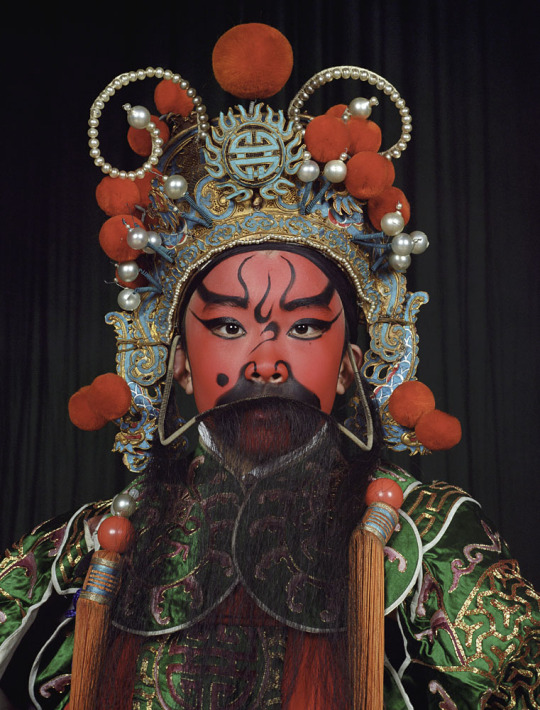
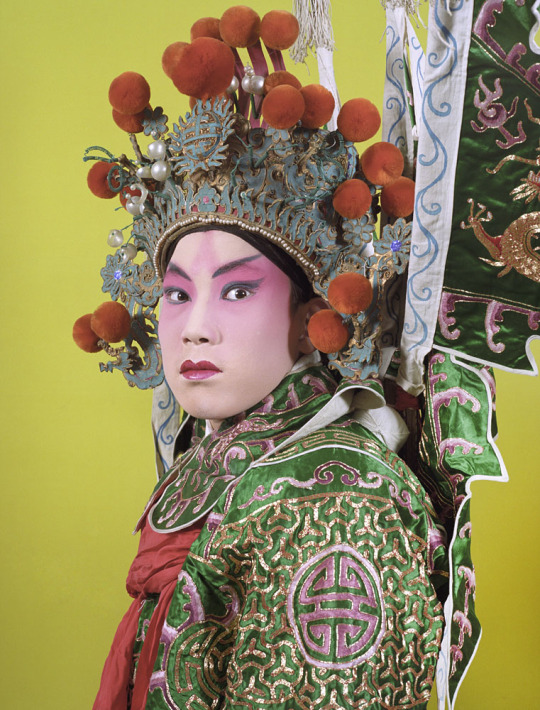
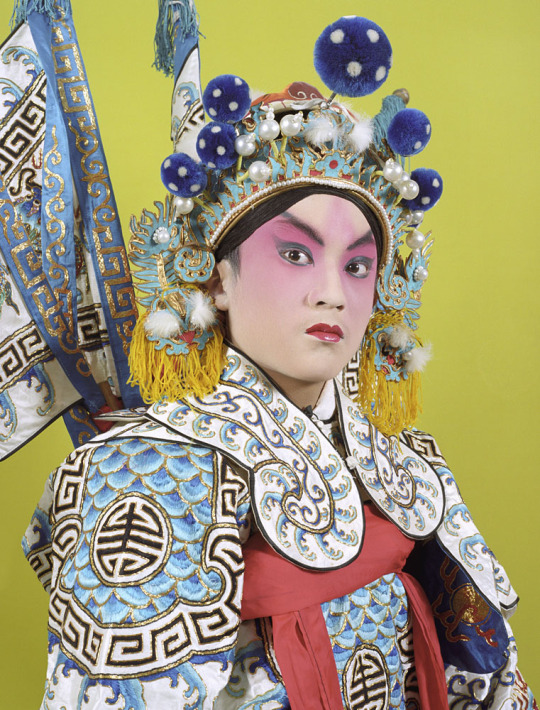

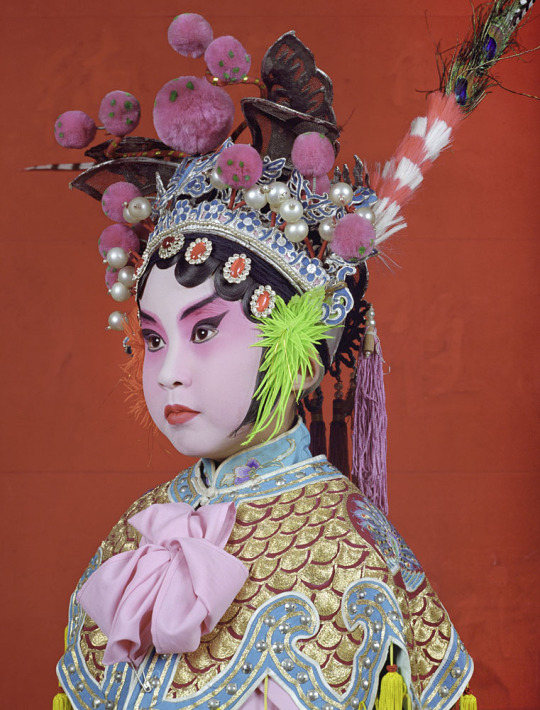
Rongqiu isn't used just for Chinese opera performances - it's a very common decorative item for Chinese headwear, especially for traditional/folk performances.
Below - examples of rongqiu use in folk custom/performance costumes, left to right: 1) 游神/youshen (wandering gods) procession in Fujian (x), 2) 英歌舞/yingge wu (yingge dance) performer in Guangdong (x), 3) & 4) 高跷/gaoqiao (stilt walking) performers in a 社火/shehuo parade in Gansu (x):

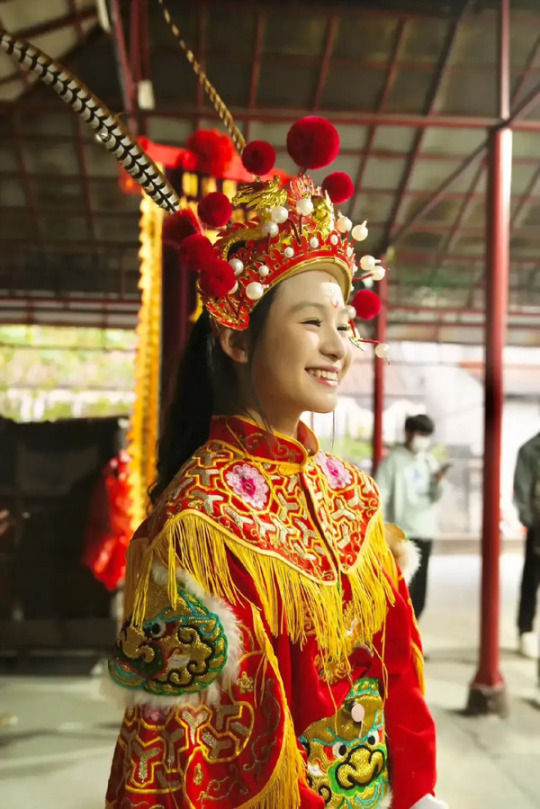

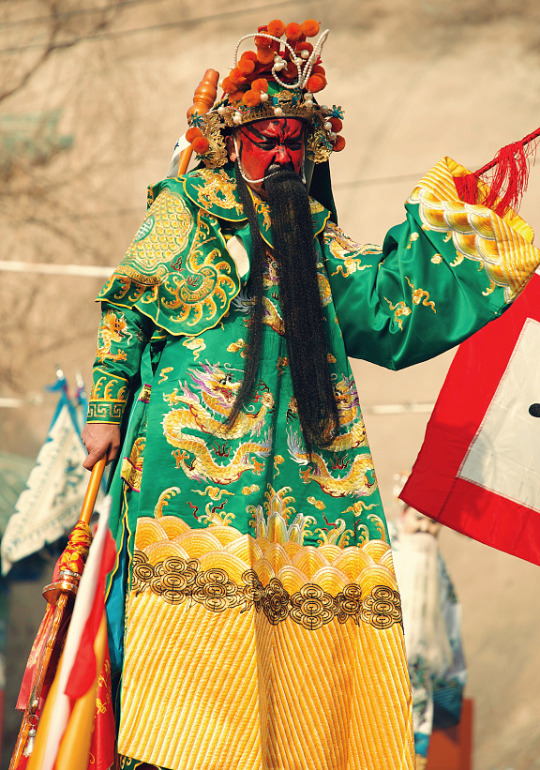
As a festive decoration, rongqiu was also widely used on bridal guan (crowns) from the Qing dynasty into the modern day.
Below - examples of rongqiu use in historical bridal guan: Left - a bride during the late Qing dynasty, circa 1890 (x); Right - a bride during the Republican era/minguo, in 1939 (x):
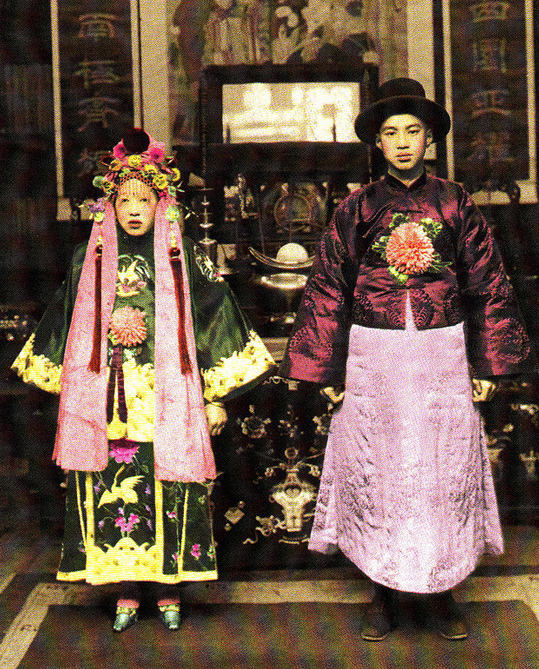
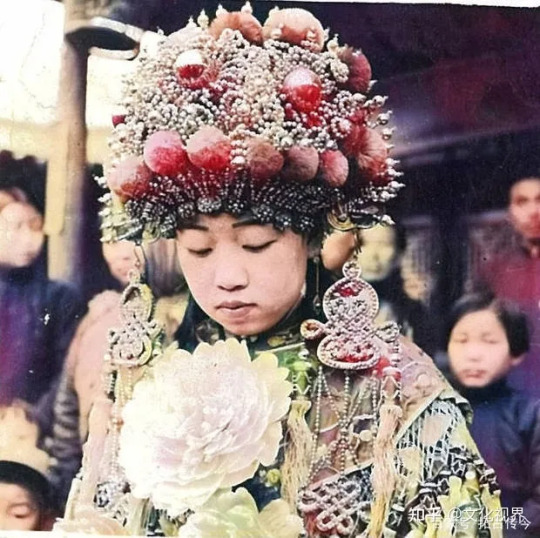
For some reason it's been extremely difficult to find sources on the origin of rongqiu that would shed more light on its significance, but based on historical paintings the use of rongqiu as a head ornament may have originated in the Qing dynasty. During the late Qing dynasty, it was fashionable among women to wear rongqiu on the sides of their hair, as can be seen in the paintings below (x):

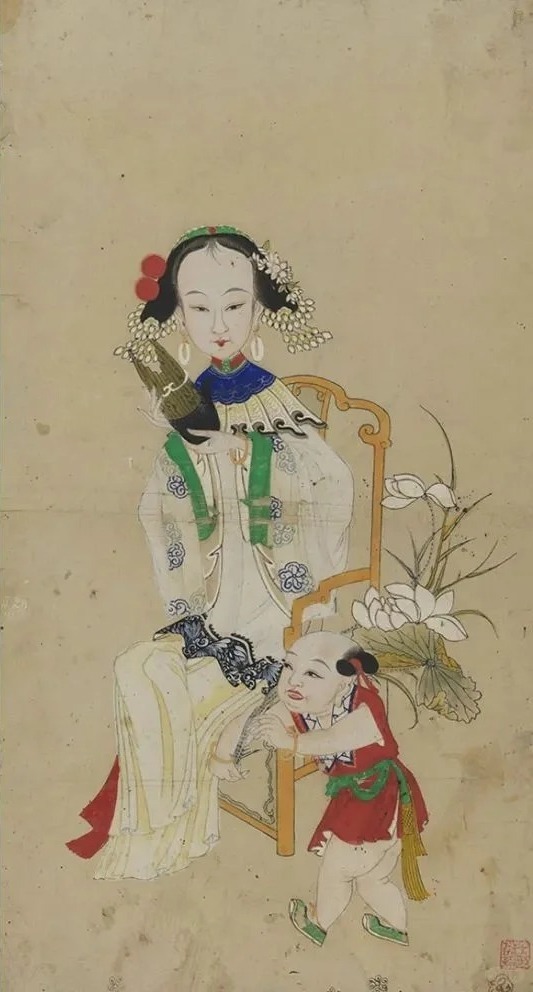
This particular style of rongqiu hair ornament was depicted in the 2012 historical cdrama 娘心计/Mother's Scheme:
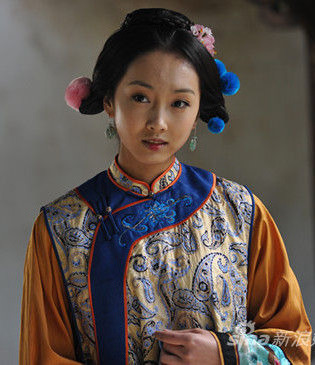
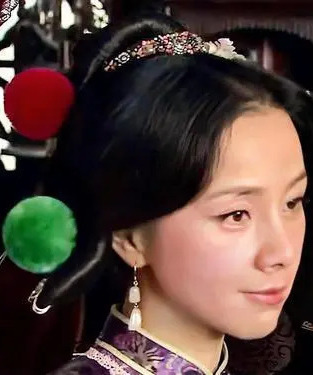
For more references, please see my rongqiu and kuitou tags.
If anyone has more information on the significance of rongqiu, please do share!
Hope this helps ^^
#rongqiu#pompoms#kuitou#chinese opera#opera costume#xifu#hanfu#history#reference#ask#reply#junpeicindystories#chinese fashion#chinese clothing#china
505 notes
·
View notes
Text
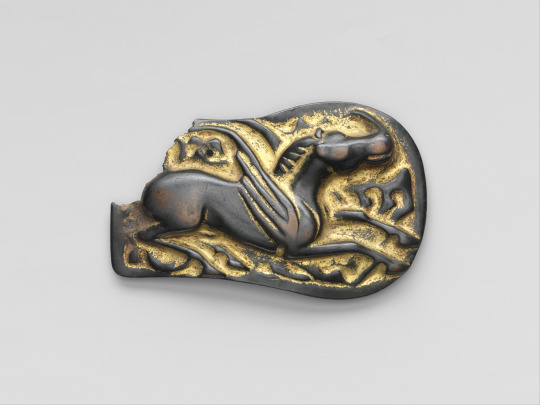

東漢(鮮卑文化) 鎏金翼馬紋銅飾板
~ Plaque with a Winged Horse.
Period: Eastern Han dynasty (25–220), Xianbei culture
Date: 1st century
Culture: North China
Medium: Gilt bronze
#ancient#ancient art#history#museum#archeology#ancient history#archaeology#china#chinese#ancient china#winged horse#horse#plaque with a winged horse#plaque#eastern han dynasty#xianbei#1st century
905 notes
·
View notes